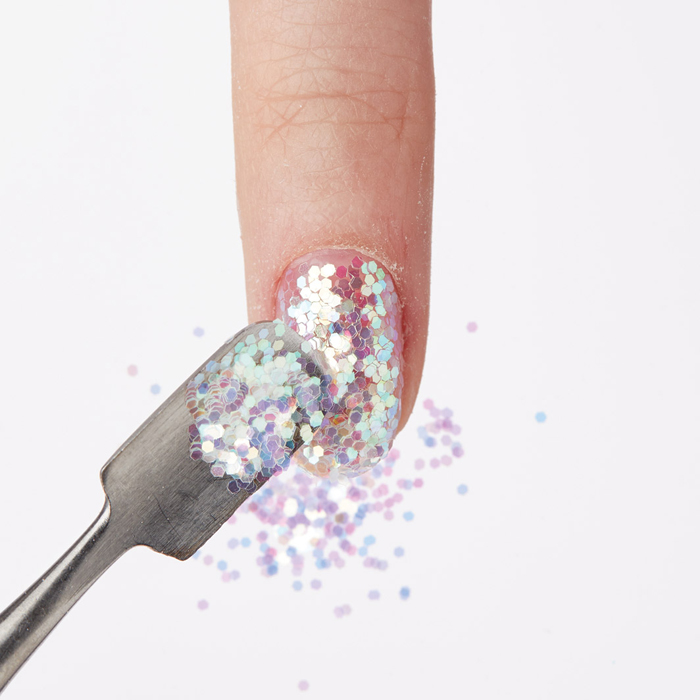

Hard gel is applied to the nail straight from the pot (no mix ratio required) and each layer is cured under a UV or LED light.
#Hard gel overlay plus
It’s made of monomers and/or oligomers (chains of monomers) plus other ingredients that help the gel remain workable, adhere to the nail, harden properly and resist yellowing. Technically speaking, hard gel (also called traditional or standard gel) is similar to acrylic in its chemical makeup.

After a proper introduction, your clients will be saying “hello” to hard gel as well! Here, experts reacquaint you with the basics and benefits of hard gel, and share important tips for application and removal.
#Hard gel overlay professional
However, like other professional products, when used properly, hard gel boasts plenty of compelling qualities that clients (and techs!) should be talking about. Unfortunately, many newbie nail customers tend to lump them all into one daunting category, which may be accompanied by a fear of fumes, nail damage and other potentially misplaced apprehensions. Might we suggest some non-toxic nail polishes to curb your manicure appetite before your next salon visit? Make it a manicure party with a girls’ night in, even! See the original post here.As longer nails continue to trend, even the most conservative clients can’t help but be curious about enhancements. Now your texting talons can brave another day. If there are still more stubborn spots, soak a new cotton pad with acetone and wrap it around the nail again with aluminium foil for another 10 minutes. Just gently scrape the gel off by going underneath and lifting it up. Leftovers are usually around the sides and cuticle areas, so be extra careful when removing it. If there are still leftover colour hanging on, then it’s time to put some elbow grease into it with a wooden cuticle stick (not a toothpick). If the gel extension is still glued on pretty tight, leave the cotton pad on for another five minutes.

As you remove the cotton pads, apply some pressure and pull. It will look as though it’s peeling off or lifted - that’s when you know it’s ready to just crumble off. Leave it on for 10-15 minutes for the gel to unlatch itself from your nails.īy the end of 15 minutes, the gel extensions should loosen up. It will be a little tricky to do it on the last few nails with aluminium-foiled fingers, but hang in there. The easiest way to start would be with your dominant hand first. The size should be large enough to wrap and secure the cotton pad around your fingertips.ĭo this on all ten nails. Aluminium Foil TipsĬut the aluminium foil into small squares before wrapping your fingers in the soaked cotton pads. You may want to consider doing each hand separately. Unfortunately, those will only slow down the removal process and you will have to leave them on longer than needed. Alternatively, you can soak your fingertips in a bowl of acetone but this step restricts your movement even more. Dip a cotton ball or pad in acetone - preferably the ones without any moisturising benefits.

The key is to keep your fingers soaked in acetone to remove the gel extensions.
#Hard gel overlay skin
By applying a layer of protection before (especially around the nails), your skin will be spared from the harsh drying chemicals. Acetone will be mainly used to remove the gel polish, and it’s extremely drying to the skin. Apply cuticle cream or a thick layer of hand cream to protect your nails and hands. Prior to moving on to the next step (which involves a fair bit of chemicals) here’s your chance to protect your skin. Don’t overdo it! Protect Before You Attack If you’re removing soft gel, the aim is to remove just the top coat - the shiny part of your nail polish - so that the acetone can work its way into the inner layers more effectively.Īs soon as you start seeing coloured flecks being shaved off, that’s when you know you’ve touched the nail colour. If you don’t have a professional grade electric filing drill at home (who would?), a coarse nail file with about 80/80 grit is your best bet - especially if you have hard gel nails.įile down the top layer of your gel nails with cross-hatched strokes. Whip out your best nail file, because your first step is to sand the gel down.


 0 kommentar(er)
0 kommentar(er)
